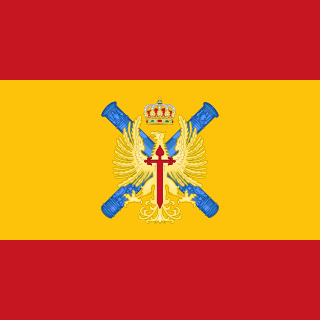 W
WCaptain General has been the highest rank in the Spanish Army since the 18th century. A five-star rank with NATO code OF-10, it is equivalent to a field marshal of the armies of numerous countries, a general of the Army of the United States, a captain general of the Spanish Navy (Armada Española) or a Captain general of the Air Force in the Spanish Air Force (Ejército del Aire). A Captain General's insignia consists of two command sticks under five four-pointed stars below the Royal Crown.
 W
WPedro Pablo Abarca de Bolea y Jiménez de Urrea, 10th Count of Aranda, was a Spanish statesman and diplomat.
 W
WJosé Fernando de Abascal y Sousa, 1st Marquess of Concordia, KOS, was a Spanish military officer and colonial administrator in America. From August 20, 1806 to July 7, 1816 he was viceroy of Peru, during the Spanish American wars of independence.
 W
WAlfonso XII, also known as El Pacificador or the Peacemaker, was King of Spain from 29 December 1874 to his death in 1885. After a revolution that deposed his mother Isabella II from the throne in 1868, Alfonso studied in Austria and France. His mother abdicated in his favour in 1870, and he returned to Spain as king in 1874 following a military coup against the First Republic. Alfonso died aged 27 in 1885, and was succeeded by his son, Alfonso XIII, who was born the following year. He is the most recent monarch of Spain to have died while on the throne.
 W
WAlfonso XIII, also known as El Africano or the African, was King of Spain from 17 May 1886 to 14 April 1931, when the Spanish Second Republic was proclaimed. He was a monarch from birth as his father, Alfonso XII, had died the previous year. Alfonso's mother, Maria Christina of Austria, served as regent until he assumed full powers on his sixteenth birthday in 1902.
 W
WAmadeo I was an Italian prince who reigned as King of Spain from 1870 to 1873. The first and only King of Spain from the House of Savoy, he was the second son of King Vittorio Emanuele II of Italy and was known for most of his life as The Duke of Aosta.
 W
WAntoine d'Orléans was a member of the French royal family in the House of Orléans. He was the youngest son of King Louis Philippe of France and his wife Maria Amelia Teresa of the Two Sicilies. He was styled as the Duke of Montpensier. He was born on 31 July 1824 at the château de Neuilly and died 4 February 1890 at Sanlúcar de Barrameda, Spain.
 W
WAlonso de Arce y Soria was a Spanish army's officer and politician, who served during the Viceroyalty of Peru as governor of Buenos Aires.
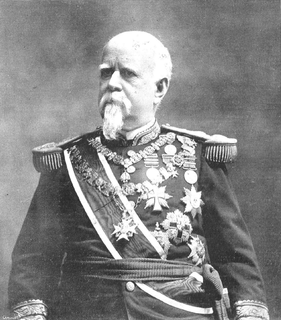 W
WMarcelo de Azcárraga Ugarte y Palmero-Versosa de Lizárraga was a Spanish soldier-politician and thirteenth Prime Minister of Spain following the restoration of the Spanish monarchy. He served as Prime Minister in 1897, 1900–1901, and 1904–1905. Azcárraga was the only Spanish Prime Minister of part Insulares, specifically Spanish Filipino, descent.
 W
WLouis des Balbes de Berton de Crillon, 1st Duke of Mahón, 2nd Duke of Crillon was a Franco-Spanish military officer who reached the rank of Captain general of the Army. He became a soldier at the age of 16 and served with distinction in the French army before transferring to the army of Spain, which was allied with France for much of the 18th century. A member of a distinguished military family, he was widely admired for his personal courage, courtesy and chivalry. By the end of his life he had risen to the highest military rank in Spain and it was said that he had served in 68 engagements.
 W
WGeneral William Carr Beresford, 1st Viscount Beresford, 1st Marquis of Campo Maior, was an Anglo-Irish soldier and politician. A general in the British Army and a Marshal in the Portuguese Army, he fought alongside The Duke of Wellington in the Peninsular War and held the office of Master-General of the Ordnance in 1828 in Wellington's first ministry. He led the 1806 failed British invasion of Buenos Aires
 W
WJoaquín Blake y Joyes was a Spanish military officer who served with distinction in the French Revolutionary and Peninsular wars.
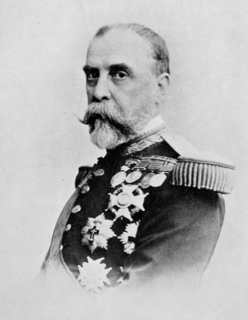 W
WRamón Blanco Erenas Riera y Polo, 1st Marquess of Peña Plata was a Spanish brigadier and colonial administrator. Born in San Sebastián, he was sent to the Caribbean in 1858 and governed Cuba and Santo Domingo. In 1861, he returned to Spain but was then sent to the Philippines (1866–1871).
 W
WJosé de Bustamante y Guerra, sometimes referred to simply as Bustamante, was a Spanish naval officer, explorer, and politician.
 W
WRamon Cabrera y Griñó, 1st Count of Morella, 1st Marquis of Ter was a Carlist general of Catalonia. He renounced the combined title of 1st Duke of Maestrazgo with its annual stipend in favour of the less fortunate and kept both the Borbón-recognised Carlist count and the subsequent Borbón marquis nobility titles instead.
 W
WDon Carlos, Prince of Bourbon-Two Sicilies, Infante of Spain was the son of Prince Alfonso of the Two Sicilies, Count of Caserta and his wife Princess Maria Antonietta of Bourbon-Two Sicilies, and nephew of the last King of the Two Sicilies, Francis II.
 W
WDon Pedro Caro y Sureda, 3rd Marquis of la Romana was a Spanish general of the Peninsular War.
 W
WJosé Miguel de Carvajal-Vargas y Manrique de Lara Polanco, 2nd Duke of San Carlos,, 6th conde de Castillejo and 9th conde del Puerto, 10th "Correo Mayor de las Indias", was the son of Mariano Joaquín de Carvajal-Vargas y Brun, 8th conde del Puerto,, and Maria Manrique de Lara Polanco y Carrillo, daughter of the II Marquis of Lara, the grand son of Fermín Francisco de Carvajal-Vargas y Alarcón, born in Chile, 1st duke of San Carlos and Grandee of Spain, being a Secretary of State, some sort of Prime Minister of Spain under the Absolutist Restauration in the times of King Fernando VII of Spain, (1784–1833). He was a member of the Royal Spanish Academy from 1814 to 1828 and, three times Mayordomo mayor to the King.
 W
WFrancisco Javier Castaños Aragorri Urioste y Olavide, 1st Duke of Bailén was a Spanish general and politician who excelled during the French Revolutionary Wars and the Napoleonic Wars. From July to September 1834, he served as the first president of the Senate of Spain, at that time called House of Peers.
 W
WPedro Antonio de Cevallos Cortés y Calderón, also spelled Ceballos, was a Spanish military Governor of Buenos Aires between 1757 and 1766, and the first Viceroy of the Río de la Plata in 1776.
 W
WCharles IV was King of Spain and the Spanish Empire from 1788 to 1808.
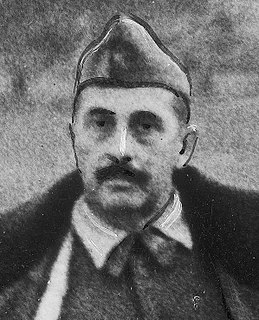 W
WFidel Dávila Arrondo was a Spanish Army officer during the Spanish Civil War.
 W
WEdward VII was King of the United Kingdom of Great Britain and Ireland and the British Dominions, and Emperor of India from 22 January 1901 until his death in 1910.
 W
WFrancisco Javier de Elío, was a Spanish soldier, governor of Montevideo and the last Viceroy of the Río de la Plata. He was also instrumental in the Absolutist repression after the restoration of Ferdinand VII as King of Spain. For this, he was executed during the Trienio Liberal.
 W
WBaldomero Fernández-Espartero y Álvarez de Toro was a Spanish marshal and statesman. He served as the Regent of the Realm as well as three times as Prime Minister. Throughout his life, he was endowed with a long list of titles such as Prince of Vergara, Duke of la Victoria, Count of Luchana, Viscount of Banderas and was also styled as "the Peacemaker".
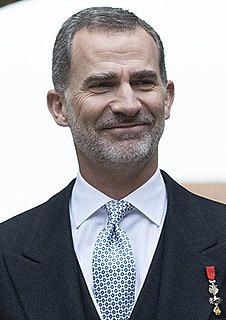 W
WFelipe VI or Philip VI is the King of Spain. He ascended the throne on 19 June 2014 upon the abdication of his father, Juan Carlos I. His mother is Queen Sofía, and he has two elder sisters, Infanta Elena, Duchess of Lugo, and Infanta Cristina. In 2004, Felipe married TV news journalist Letizia Ortiz with whom he has two daughters, Leonor and Sofía.
 W
WFerdinand VII was the King of Spain during the early- to mid-19th century. He reigned over the Spanish Kingdom in 1808 and again from 1813 to his death in 1833. He was known to his supporters as el Deseado and to his detractors as el Rey Felón.
 W
WFrancisco de Asís, Duke of Cádiz, sometimes anglicised Francis of Assisi, was the king consort of Queen Isabella II of Spain from their marriage on 10 October 1846 until Isabella was overthrown on 30 September 1868.
 W
WGregorio García de la Cuesta y Fernández de Celis was a prominent Spanish general of the Peninsular War.
 W
WLuis García Ruiz was an army general who took part in the military uprising against the Second Republic in July 1936.
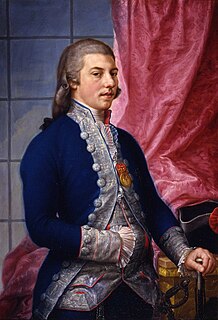 W
WManuel Godoy y Álvarez de Faria, Prince of the Peace, 1st Duke of Alcudia, 1st Duke of Sueca, 1st Baron of Mascalbó was First Secretary of State of Spain from 1792 to 1797 and from 1801 to 1808. He received many titles, including príncipe de la Paz, by which he is widely known. He is best known for his diplomacy with Napoleon. In 1804, Godoy was elected a member of the American Philosophical Society in Philadelphia, Pennsylvania.
 W
WMariano Gómez-Zamalloa y Quirce was a Spanish military officer and colonial administrator.
 W
WMiguel de la Grúa Talamanca de Carini y Branciforte, 1st Marquess of Branciforte,, was an Italian military officer of the Spanish Empire, who served as 53rd Viceroy of New Spain from July 12, 1794 to May 31, 1798.
 W
WJosé Gutiérrez de la Concha e Irigoyen, 1st Marquess of Havana, 1st Viscount of Cuba, Grandee of Spain was a Spanish noble, general, and politician who served three times as Captain General of Cuba and once as the Prime Minister of Spain.
 W
WManuel Gutiérrez de la Concha e Irigoyen, Marquis of the Duero, was a 19th-century Spanish military man and Liberal-Moderate politician, noted for opposing the Carlist rebellions. He was born in Córdoba del Tucumán, Viceroyalty of the Río de la Plata, on 3 April 1808, and died at Monte Muro, Navarre, on 27 June 1874.
 W
WManuel Gutiérrez Mellado, 1st Marquis of Gutiérrez-Mellado was a Spanish Army officer and politician who played a relevant role during the Spanish transition to democracy especially with regard to democratizing the Armed Forces.
 W
WDon Pedro de Alcántara Álvarez de Toledo y Salm-Salm, 13th Duke of the Infantado, was a Spanish politician and general.
 W
WJoaquín Jovellar y Soler was a Spanish general who served as the Prime Minister of Spain from September 12, 1875 – December 2, 1875 and governor and captain-general of the Philippines from April 7, 1883 – April 1, 1885.
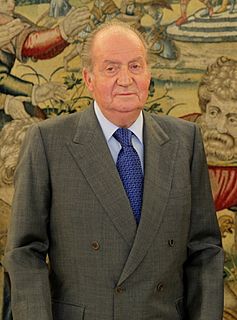 W
WJuan Carlos I is a member of the Spanish royal family who reigned as King of Spain from 22 November 1975 until his abdication on 19 June 2014. In Spain, since his abdication, Juan Carlos has usually been referred to as the Rey Emérito.
 W
WJosé López Domínguez,, was a Spanish military and politician who served as Prime Minister of Spain between 6 July and 30 November 1906.
 W
WThe military career of Francisco Franco Bahamonde began on 29 August 1907, when he took the oath as a cadet at the Spanish Toledo Infantry Academy. On 13 July 1910 he graduated from Infantry Academy and was commissioned as a second lieutenant in the Spanish Army, in the same promotion as Juan Yagüe, Emilio Esteban Infantes, Camilo Alonso Vega, José Asensio, Lisardo Doval Bravo and Eduardo Sáenz de Buruaga. He rose through the ranks over the next twenty years and became one of the most important Spanish commissioned officers of the Rif War. On 31 January 1926 Franco, aged 33, became the youngest general in all of Europe. In January 1928 he was then chosen to direct the newly formed General Military Academy in Zaragoza. From 19 May 1935 to 23 February 1936, Franco was elevated to Chief of Army Staff before the 1936 election moved the leftist Popular Front into power, relegating him to the Canary Islands as Commander of the Archipelago Force. After initial reluctance, he joined the July 1936 military coup which, after failing to take Spain, sparked the Spanish Civil War.
 W
WAgustín Muñoz Grandes was a Spanish general, and politician, vice-president of the Spanish Government and minister with Francisco Franco several times; also known as the commander of the Blue Division between 1941 and 1942.
 W
WRamón María Narváez y Campos, 1st Duke of Valencia was a Spanish general and statesman who served as Prime Minister on several occasions during the reign of Isabella II. He was also known in Spain as El Espadón de Loja, "The Big Sword of Loja".
 W
WLeopoldo O'Donnell y Jorris, 1st Duke of Tetuán, GE, was a Spanish general and statesman who was Prime Minister of Spain on several occasions.
 W
WJosé Rebolledo de Palafox y Melzi, 1st Duke of Saragossa was a Spanish general who fought in the Peninsular War.
 W
WManuel Pavia y Rodriguez de Alburquerque was a Spanish general, born in Cadiz, who was an important part of Spanish political life during the second half of the 19th century. He participated in the Revolution of 1868, which removed Isabella II from power, and led the coup d'état which brought down the First Spanish Republic, giving way to the Restoration and the rule of Isabella's son Alfonso XII.
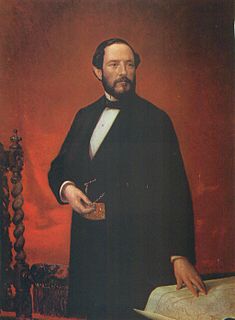 W
WJuan Prim y Prats, 1st Count of Reus, 1st Marquis of los Castillejos, 1st Viscount of Bruch was a Spanish general and statesman who was briefly Prime Minister of Spain until his assassination.
 W
WFernando Primo de Rivera y Sobremonte, 1st Marquess of Estella was a Spanish politician and soldier.
 W
WAntonio Ricardos Carrillo de Albornoz was a Spanish general. He joined the army of the Kingdom of Spain and fought against Habsburg Austria, the Portugal, and the First French Republic during a long military career. By embracing the Spanish Enlightenment, he earned the displeasure of conservative elements of society. He played an active role in reforming the Spanish military. Upon the outbreak of the War of the Pyrenees in 1793, the king sent him to command in Catalonia. He invaded Roussillon where he won several victories over the French. After his death in early 1794, the war went badly for Spain.
 W
WDon José Ramón Rodil y Campillo, 1st Marquess of Rodil and 3rd Viscount of Trobo was a ruthless Spanish Liberal general and statesman, born in Santa María del Trovo, Galicia region. Originally a law student at the University of Santiago de Compostela, he enlisted in the Spanish army and went to Peru in 1817 as one of the commissioned officers in the fight against the pro-independence nationalist forces. He also served as Prime Minister of Spain from 17 June 1842 to 9 May 1843.
 W
WFrancisco Serrano Domínguez Cuenca y Pérez de Vargas, 1st Duke of la Torre, Grandee of Spain, Count of San Antonio was a Spanish marshal and statesman. He was Prime Minister of Spain in 1868–69 and regent in 1869–70.
 W
WJosé Ramón de Urrutia y de las Casas was a Spanish captain general and military engineer.
 W
WCamilo Alonso Vega was a Spanish military officer and minister.
 W
WArthur Wellesley, 1st Duke of Wellington, was an Anglo-Irish soldier and Tory statesman who was one of the leading military and political figures of 19th-century Britain, serving twice as prime minister. He is one of the commanders who won and ended the Napoleonic Wars when the coalition defeated Napoleon at the Battle of Waterloo in 1815.
 W
WWilhelm II, anglicised as William II, was the last German Emperor (Kaiser) and King of Prussia, reigning from 15 June 1888 until his abdication on 9 November 1918. Despite strengthening the German Empire's position as a great power by building a blue-water navy and promoting scientific innovation, his tactless public statements and erratic foreign policy greatly antagonized the international community and are considered by many to be one of the underlying causes for World War I. When the German war effort collapsed after a series of crushing defeats on the Western Front in 1918, he was forced to abdicate, thereby bringing an end to the House of Hohenzollern's three-hundred-year reign.
 W
WJuan de Zavala y de la Puente, 1st Marquess of Sierra Bullones was a Spanish noble and politician. After fighting in the First Carlist War, the Marquess served as Prime Minister of Spain.